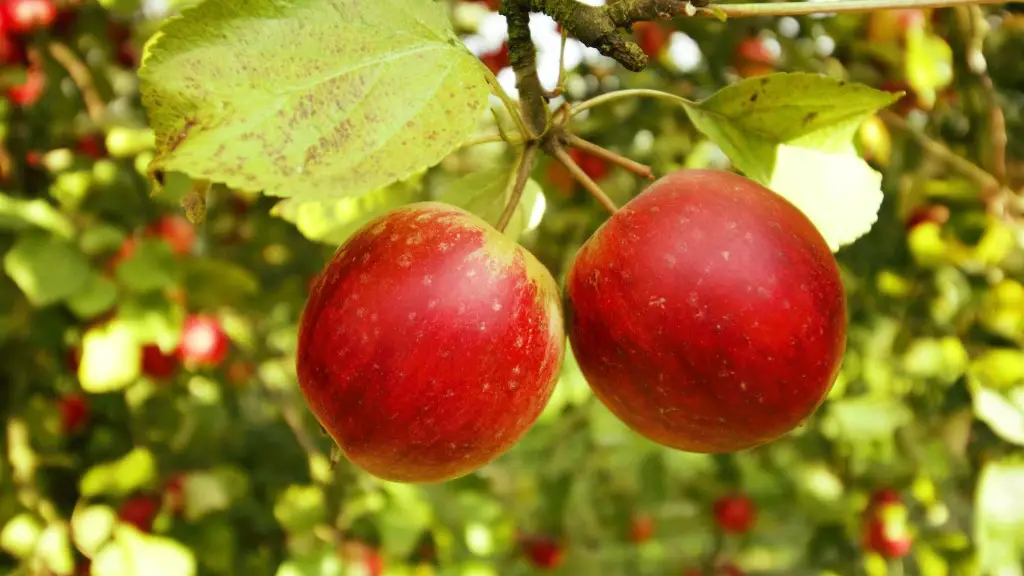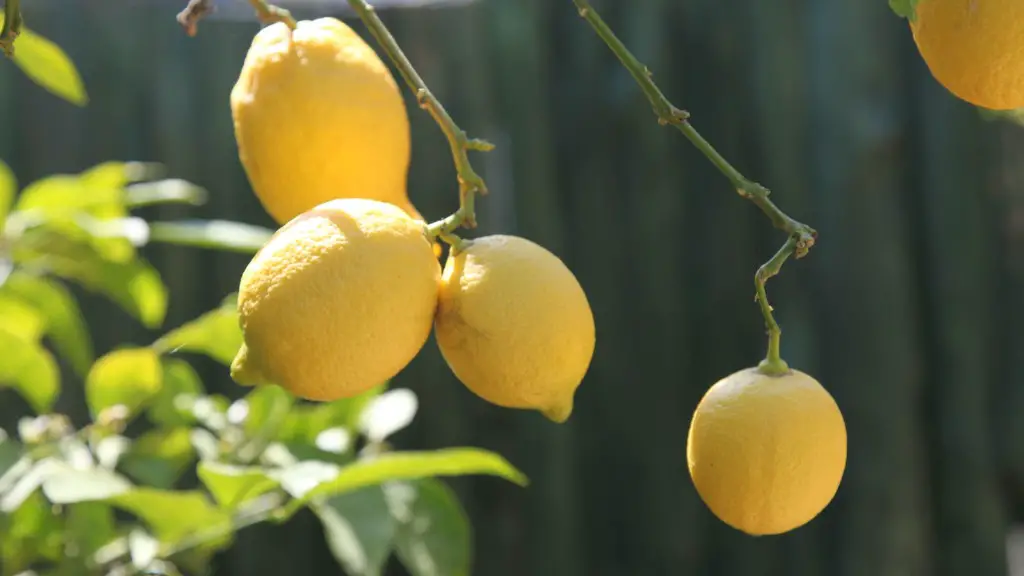Orange spots on apple tree leaves can be caused by many different factors. The most common cause is a fungal infection called Apple Scab.Apple Scab is caused by the fungus Venturia inaequalis. When it infects the leaves of an apple tree, it produces raised, orange spots on the surface.This can lead to defoliation and weakened tree vigor. Other fungal infections, such as Alternaria, may also cause orange spots. In addition, there are several environmental factors that can contribute to orange spots on apple tree leaves.
Insect Infestation
Insects, such as aphids, scale, and mites, can also cause orange spots on apple tree leaves. These insects feed on the sap from the leaves, which can result in small, yellow to orange spots. In severe cases, the leaves may become distorted and curl inwards from the insect feeding. The damage from insect infestations can be prevented by using a horticultural oil or insecticidal soap on the leaves.
UV Damage
Excessive exposure to the sun can also lead to orange spots on apple tree leaves. This type of damage is caused by ultraviolet (UV) radiation. High levels of UV radiation can cause the leaves to become discolored and dry, leading to the formation of brown or orange spots. To prevent UV damage, trees should be pruned and/or protected with a shade cloth.
Nutrient Deficiencies
Nutrient deficiencies in the soil can also cause orange spots on apple tree leaves. In particular, a lack of nitrogen and iron can lead to yellowish-orange patches on the leaves. To prevent this problem, make sure to use a balanced fertilizer that is appropriate for apple trees. Nitrogen can be supplied through compost or nitrate fertilizer.
Climate Conditions
Finally, orange spots can be caused by extreme changes in temperature or excessive rainfall. Hot summer days can cause apple tree leaves to dry out, leading to the formation of orange spots. Likewise, excessive or prolonged rainfall can be just as damaging, as the leaves become saturated with water and are more susceptible to fungal infections. To protect trees from climate conditions, it is important to maintain adequate drainage around the tree and water it during dry periods.
Fungicide Treatment
If a fungal infection is the cause of the orange spots on the apple tree leaves, then a fungicide should be used to treat the infection. Fungicides can be applied as a spray or a drench. The fungicide should be chosen based on the type of fungus that is causing the infection. It is important to follow the instructions and safety precautions when applying a fungicide.
Prune and Sanitize
Finally, pruning and sanitizing the affected areas may help to reduce the spread of the fungus. Pruning should be done carefully to avoid damaging healthy tissue. After pruning, it is important to sanitize the pruning tools in hydrogen peroxide or a bleach solution. This will help to reduce the spread of the fungus.
Check of pH Level
The pH of the soil is an important factor in maintaining healthy apple tree growth. A pH level that is too low can contribute to nutrient deficiencies, which can lead to orange spots on the leaves. It is important to periodically test the pH level of the soil to ensure that the apple tree is getting the nutrients it needs for proper growth.
Fertilize Regularly
Regular fertilization is essential for healthy apple tree growth. Applying a balanced fertilizer will provide essential micronutrients that are necessary for good growth. In addition, regular fertilization will ensure that the tree is getting adequate nitrogen, which is needed to produce chlorophyll and prevent the formation of orange spots on the leaves.
Provide Adequate Watering
Adequate watering is also essential for healthy apple tree growth. Apple trees need to be watered regularly to prevent drought stress, which can lead to orange spots on the leaves. In general, apple trees should be watered once a week during dry periods, with the amount of water depending on the size of the tree.
Manage Insect Population
Finally, the insect population should be managed to prevent orange spots caused by insect infestations. Insecticidal soaps and horticultural oils can be used to reduce insect populations and protect the tree. For severe infestations, contact a local qualified pest management company as they will be able to provide professional advice and treatment.


